Affiliate disclosure: This post may contain affiliate links. Please see our Privacy Policy.
Boletes are a popular summer mushroom that’s delicious and relatively easy to identify for beginning foragers. King boletes are some of the most popular, but there are plenty of other bolete mushrooms you can identify and enjoy.

This article was written by Timo Mendez, a freelance writer and amateur mycologist who has foraged wild mushrooms all over the world.
King Boletes are unfading celebrities amongst wild foods and quite possibly the world’s favorite wild mushroom. They are quintessential icons in the world of fungi and are eagerly awaited by foragers and foodies alike.
The reason is not their emblematic appearance, their wide distribution, or their abundant generosity. It’s because of their delectable, delicious flavor that takes any meal up in the ranks.
I’ll be honest though, I wasn’t always impressed by King Boletes. The first time I harvested them, I found the flavor mild, the texture unexciting, and nothing particularly special about them. I didn’t understand what all the fuss was about. Today, I know that’s because when I started foraging, I always found the large, fluffy, and buggy ones that were well past their prime.
It was only after becoming an experienced forager that I began finding the top-tier specimens, peak at their point of harvesting. This flipped the script and I began to understand why the culinary world is in love with this mushroom.
Later, my mind was blown again. I realized that fresh King Boletes are great, but they can be even better. Dried Boletes have a concentrated flavor and a rich aroma that is largely unmatched by fresh ones. Sure, I love the texture when they are fresh, but the nutty aroma once they’re dried is unparalleled.
As time went on I began to experiment with other types of Boletes. Butter Boletes, Scaber Stalks, Old Man Of The Woods, Bay Boletes, Russels Boletes, and the list goes on. If you’re adventurous enough to step outside of the king’s castle, you can find plenty of other delicious edible species in this group. Not only are some of them pretty good, but they can often be more abundant than Kings.
While Boletes are generally a pretty safe group compared to gilled mushrooms, there are toxic species you need to watch out for. These aren’t considered deadly, but they can cause pretty severe gastrointestinal discomfort and could cause serious conditions in sensitive individuals.
I’m going to cover both popular King Boletes, as well as other types of bolete mushrooms.

What Is a Bolete Mushroom?
Boletes are a diverse group of spectacular mushrooms that come in all shapes, sizes, colors, and forms. Some of them can be fantastically colored and ornamented with spectacular textures. Others shockingly shift colors, bruising blue within seconds of being handled. While they can be extremely different, they are all distinguished by their fleshy texture and spongy underside. In particular, this spongy surface on the underside of the cap is the tell-tale sign of a bolete. This is in contrast to the typical gills found in many other mushrooms. And yes, there are gilled Boletes, but that’s a story for another time.
The King Of Boletes
King Boletes are the most highly prized of all the Boletes. Otherwise known as Porcini (Italy), Cepe (France), Borowvik (Poland), Steinpilz (Germany), Hongo De Pan (Mexico), or just simply Boletes. These mushrooms are treasured forest jewels of the northern hemisphere.
While many people are familiar with the scientific name Boletus edulis used to describe this mushroom, many distinct species are considered King Boletes. These can be called “The Royal Boletes” to avoid confusion. All of these species have very similar but unique morphologies and are all highly prized for their delicious taste. Some of these species are even regarded as superior to the classic Boletus edulis!
The Royal Boletes
Below is a list of some of the so-called Royal Boletes.
- Bronze Bolete (Boletus aereus)- Highly prized European King Bolete with dark cap and tan colored stem. Occurs summer/fall and often associated with high temperatures.
- Butter-foot Bolete (Boletus auripes) – Distinctly yellow Royal Bolete with tan cap found in Eastern North America and Mexico. Occurs in summer.
- Barrow’s Bolete (Boletus barrowsii) – A white King Bolete found in Western North America including Colorado and the southwestern Sky Islands.
- Red Eastern King Bolete (Boletus chippewaensis) – King Bolete from the North Eastern United States and Canada. Reddish hues on cap. Fruits late summer and fall.
- Fib King (Boletus fibrillosus) – Found in Western North America and is distinguished by its dark stem and tan cap with a fine fibrous texture. Occurs in Fall.
- Noble Bolete (Boletus nobilis) – Hardwood associated bolete from the Appalachian Mountains. Carachterized by its relatively narrow stem.
- Pine Bolete (Boletus pinophilus) – A pine-associated Bolete from Eastern North America, Europe, and Mexico. It can also be found with other conifers and hardwoods. Likely a species complex.
- Queen Bolete (Boletus regineus) – From Western North America often associated with with mixed hardwood/conifer habitat. Has a light color when young and a more equal stipe than typical Kings. Occurs fall and early winter.
- Summer Bolete (Boletus reticulatus) – Found in summer and distinguished by its velvety cap and uniform coloring. From Europe although there are similar species in North America.
- Spring King Bolete (Boletus rex-veris) – This is a King Bolete from Western North America that fruits in the mountains with fir during spring, usually a couple of weeks after snowmelt.
- Ruby Porcini (Boletus rubriceps)- The most notable Bolete from the mountains of Colorado, but also occurs in the Southwestern Sky Islands and Mexico. Distinguished by its reddish cap and fruits in summer.
- Lilac Bolete (Boletus separans) – Lilac colored King Bolete from Eastern North America. Fruits in summer and early fall
- Smith’s Bolete (Boletus smithii) – King Bolete with wine-red tinted cap, red stem base, and occurring in the Pacific Northwest and as far south as Mendocino. Fruits as early as summer in areas with moisture into the fall.
- Tan Eastern King Bolete (Boletus variipes) – King Bolete with tan colored stem and cap from Eastern North America and Mexico. Occurs during summer.
- Southern Oak Bolete (Boletus quercophilus) – Oak-associated Bolete from Mexico and Central America.
The Boletus edulis complex
The species known as Boletus edulis is a complex topic. So much so that it is considered a “species complex” (that’s a joke). No, but really, “species complex” is a term used to describe a group of closely related but distinct organisms whose taxonomic boundaries are not clear-cut. It is found across the world but with diverse lineages. A recent study from October 2022 found that there are at least six unique lineages of Boletus edulis in North America and Europe. Five of these are primarily from North America. While all of these are overall very similar, there are some distinct differences to each of these lineages.

Identifying King Boletes
King Boletes are easy to recognize and a great mushroom for beginner foragers. They are relatively distinct and mistaking them for a toxic lookalike would require a bit of negligence on behalf of the forager.
King Boletes are soft spongy mushrooms that can grow to tremendous sizes. The caps are semi-spherical and usually have a light tan color. Some varieties can be completely white (such as Barrow’s Bolete) while others have a dark brown colored cap (such as the Bronze Bolete).
One of the most distinctive characteristics of King Boletes, compared to other Boletes, is a characteristic known as reticulation. This is a fine raised netting that occurs on the stem, particularly on the upper part of the stem near the cap. This is something key to look out for and familiarize yourself with to identify Kings.
Young Boletes, known as buttons, are dense, compact, and have thick often spherical stem bases. These have completely white pores and easily fit in the palm of the hand. Buttons are the most prized for the best flavor and texture.
As they age, the stems elongate, and the caps open up. The texture becomes softer and the pores begin to darken, first turning yellow and eventually yellow-brown. If exposed to excessive rain the caps may have wrinkled texture and may quickly deteriorate in quality. Older specimens are often infested with larvae.

Key Identification Features of King Boletes
- Spongy porous underside that goes from white to yellow-brown as it ages.
- Fine raised netting on the stem, particularly on the upper portion near the cap.
- Tan-colored cap and thick white stem.
- Stem is often wide and the base and becomes narrow towards the cap.
- Does not bruise/stain blue when cut or damaged.
Where and How To Find King Boletes
King Boletes and their relatives are cosmopolitan mushrooms that are widespread in forests of the Northern Hemisphere. You can find them in almost any forest type, including both coniferous and hardwood forests.
Like many other gourmet mushrooms, Boletes only grow in a mutualistic association with tree hosts from which they obtain their carbon (other than a few exceptions). Their favorite hosts include Pine, Spruce, True Fir, Oak, Chestnut, Beech, Birch, Douglas Fir, Hemlock, Manzanita, Madrone, Tan Oak, and various other tree species. You may often find other Boletes in the same habitats where you find Kings.
Boletes often grow in lush and forested environments. You may find them growing from moss, emerging from the leaf litter, or fruiting in the grass near the edge of a forest. They can often be found in plantations, coniferous forests, hardwood forests, or mixed forests. Boletes love edges, be it the side of the road or near clearings in the forest. It is also pretty common to see them in urban areas with planted conifers.
King Boletes most often grow in patches and rarely occur in solitude. Since they often grow large, it can be easy to spot them from a distance poking out from the duff or moss. A large mushroom can often act as a “flag” that indicates the presence of a patch. This is a clue to begin looking around the area for other smaller mushrooms that may be hidden from plain sight. It is a good idea to check small irregular bumps on the ground which may be young buttons that are yet to emerge.
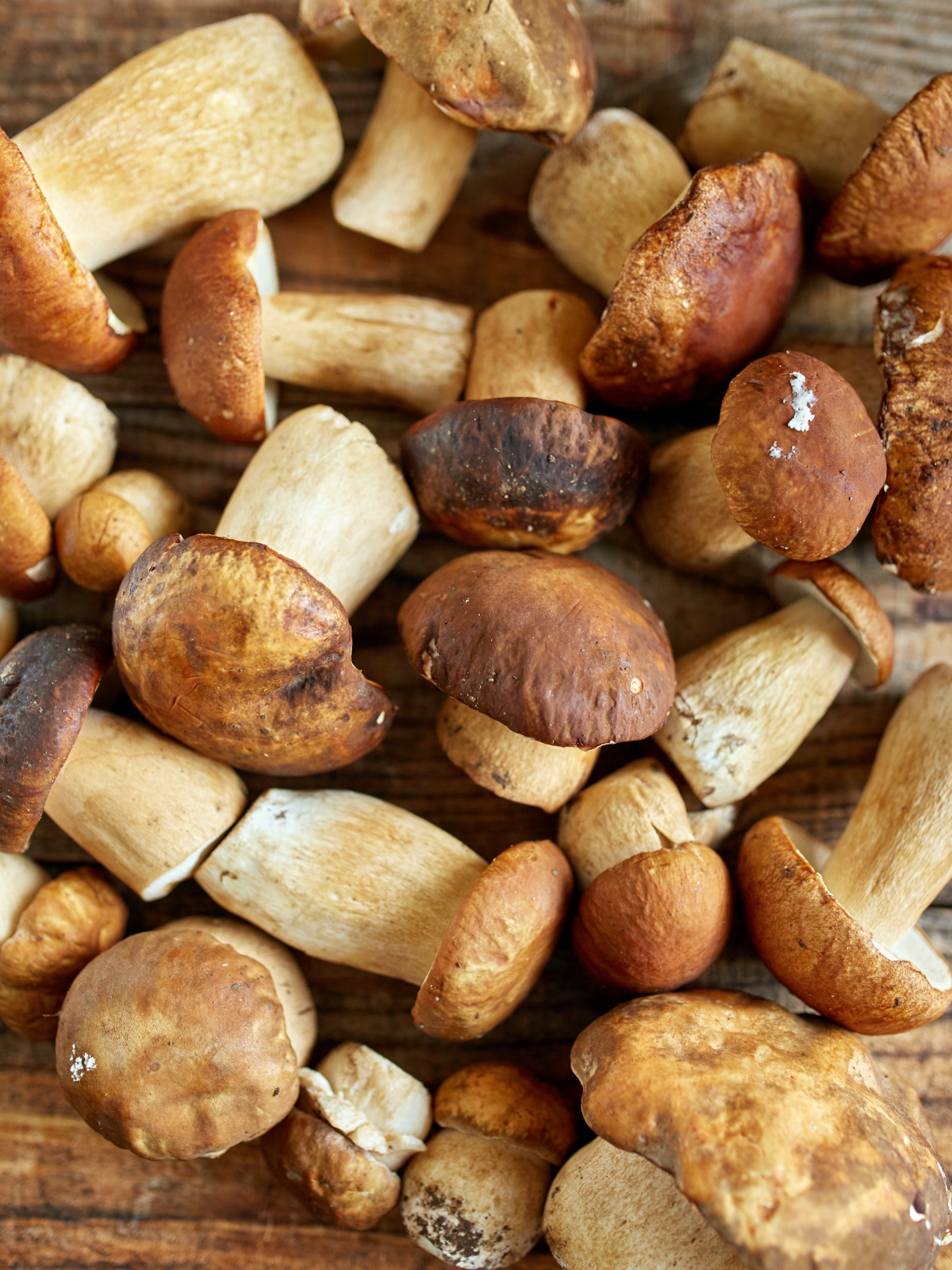
Western North America
In Western North America you can find Boletes growing in many habitats. They almost always occur with conifers, notably Spruce, Douglas Fir, Hemlock, Pine, and Fir. Sitka Spruce and Beach Pine are hosts for Kings in coastal regions. Boletes with Pine can also be found in the mountains and in urban environments. Boletes often fruit for just a couple of weeks and the season quickly dies back before the beginning of winter.
The spring season of Boletus rex-veris that occurs at high-altitude in Western North America can also be quite notable. Here they grow in association with true Fir (Abies), usually several weeks after snow melt. They often fruit a couple weeks after morels.
Colorado and the southwestern Sky Islands has a summer season that is occasionally abundant with Boletes. Here you can find Boletus rubriceps and Boletus barrowsii often in association with Fir, Pine, and Spruce.
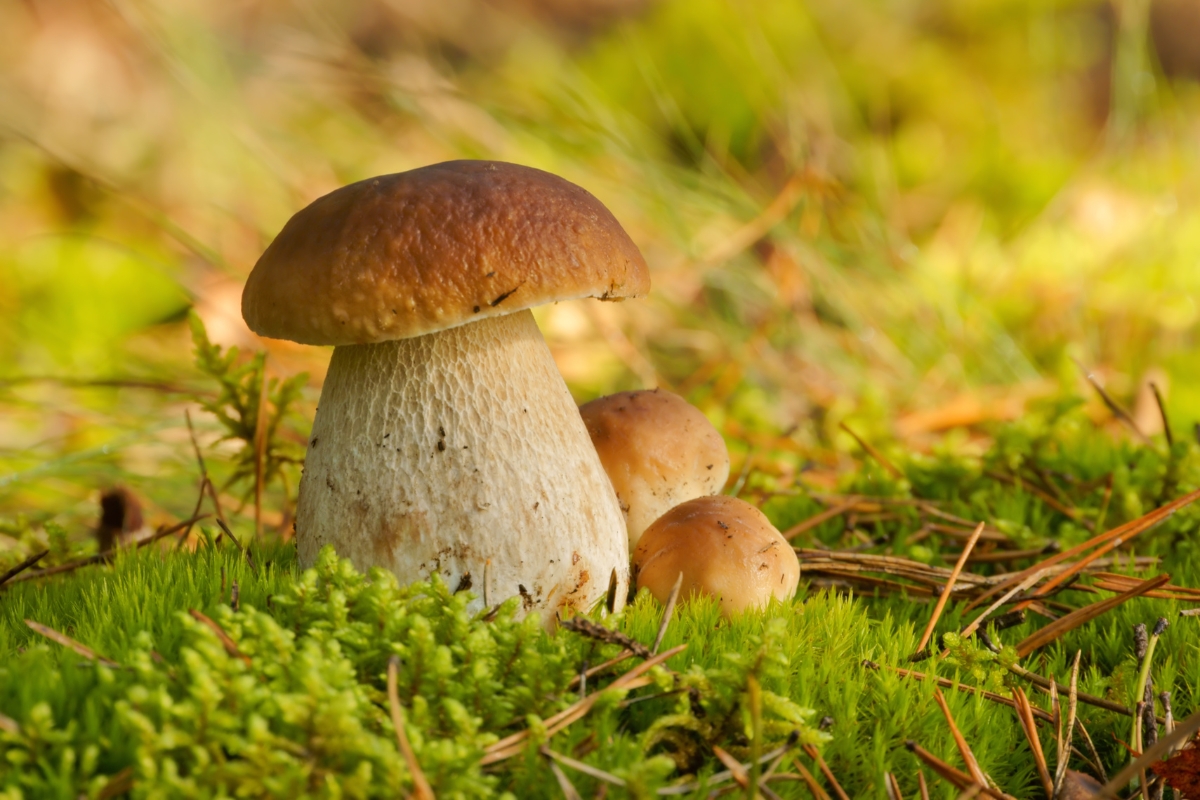
Eastern North America
East of the Rockies there are many different habitats and ecotypes of King Boletes. Almost any forest in these regions has the potential for being home to Royal Boletes, albeit they may not always be abundant. In areas where they are rare, there may be “mast years” where they grow in an abnormally large abundance.
Royal Bolets are most often found with Oak and Pine in eastern North America. Hemlock and Beech are also some of the most common hosts here.
Generally speaking, King Boletes are more common as you go northeast into Canada. In the midwest, they are often found in the far northern reaches and mainly along the Great Lakes. The northern peninsula of Michigan is said to be a great spot.
For foragers in the south, the Appalachians can be an excellent place to begin looking. Along the Gulf, King Boletes can often be found in association with Slash Pine (Pinus elliottii) and Longleaf Pine (Pinus palustris). This is a species now called Boletus pseudopinophilus and grows in relative abundance when the season is right.
One of the most common Roya Boletes found in Eastern North America is Boletus subcaerulescens. This species associates with Pine and has a slight red tinge and a very, very, mild bluing reaction. As there are toxic species that bruise blue (but not all), make sure to verify this species properly. Boletus chippewaensis is another common Royal Bolete that is found in the Northeastern United States and Canada. It is particularly sought after with Oak and Beech. This is also true for Boletus variipes.

When to Forage Boletes
Western North America
In Western North America, King Boletes are typically found in the fall or spring. They may occasionally be found during summer months in moist coastal areas.
- Fall Season: The first occurs in the fall along the coast, lowlands, and medium elevation forests. The season usually peaks around October although in southern latitudes the season maybe later. While rare, you may also find King Boletes in the fall in mountainous regions.
- Spring Season: The second season occurs in the spring following weeks after snow melt. You will want to search in lower elevations and south-facing slopes at the beginning of the season and the opposite as the season progresses. They occur in similar habitats as natural morels, but about 2-3 weeks later.
Eastern North America
In Eastern North America, King Boletes are found in the summer usually following the first big rains of the season. It is common that the season may be rather limited and only last 3-4 weeks. This is short considering the first Boletes of the season are often buggy and towards the end of the season they may also be in less than prime condition.
Bolete Look Alikes
False King – Boletus Huronensis
This is a rare mushroom from the northeast that is well known to be mistaken for King Boletes. It is important to learn about this mushroom because it will cause severe gastrointestinal issues in individuals who consume it. These can be distinguished because they have yellow flesh, a slight blueing reaction, and no reticulation on the stem.
Satans Bolete -Rubroboletus Satanas
This is a mushroom that can also cause serious gastrointestinal issues. It is pretty difficult to mistake it with Kings because of it’s bright red stem, white cap, red pores, and the fact that it stains blue. Even still, this is one to keep your eye out for especially if you are looking for other non-royal Boletes. People are intoxicated by this mushroom every year.
Rule Of Thumb For Edible Boletes
In North America, it is generally considered a rule of thumb that if a Bolete doesn’t bruise blue, doesn’t have red pores, and doesn’t taste bitter then it is edible. Some edible boletes do have these features, but hey, it’s just a rule of thumb.
Other Edible Bolete
Many other edible boletes are worth getting to know. There isn’t space in this article to go into them in detail, so conduct further research to properly identify these species. There are, of course, many others not mentioned below.
Scaber Stalks (Leccinum sp.)
Scaber Stalks are most readily identified by the presence of many small scales on the stalk. Many species bruise blue and species often form associations exclusive to certain tree types. Some of the most famous are the Aspen Boletes and Birch Boletes.
- Brown Birch-Bolete (Leccinum scabrum)
- Red-capped Scaber Stalk (Leccinum aurantiacum)
- Orange Birch Bolete (Leccinum versipelle)
- Aspen Bolete (Leccinum insigne)
- Manzanita Bolete (Leccinum manzanitae)
Butter Boletes (Butyriboletus sp.)
Butter Boletes are yellow fleshed boletes that bruise blue when cut. There are several species regarded by some foragers as superior to King Boletes. In California, they are often sought out in the mountains in the spring growing alongside Fir.
- Pink-capped Oak Butter Bolete (Butyriboletus querciregius)
- Spring Butter Bolete (Butyriboletus primiregius)
- Butter Bolete (Butyriboletus appendiculatus)
- Brown Butter Bolete (Butyriboletus persolidus)
- Mountain Butter Bolete (Butyriboletus abieticola)
- Royal Bolete (Butyriboletus regius)
Old Man Of The Woods (Strobilomyces stobilaceus)
Old Man Of The Woods is a black bolete from Eastern North America that is very distinctive for its scally cap and black color. I don’t find them nearly as much as other Boletes, but some foragers pick them.
Bay Bolete (Imleria badia)
Bay Boletes are extremely common in Europe and Eastern North America. They have chestnut-brown caps, small tan stems, and bruise blue when cut.
Red-cracking Bolete (Xerocomellus chrysenteron)
This species, and other Xerocomellus, are recognized by the cracked cap texture and the red stem. They bruise a sharp blue when damaged aswell. This species typically has a thinner stem and it is mostly red on the bottom portion near the base.
Slippery Jacks (Suillus sp.)
These are very common, especially amongst young Pines and conifers in general. They are not consumed by many foragers because of their slimy texture. They are recognized by their slimy cap surface and pores that are always yellow, even when young. It is sometimes recommended to remove the layer of flesh on the cap (the cuticle) which is less digestible.
- Chicken Fat Mushroom (Suillus americanus)
- Dotted-stalked Suillus (Suillus granulatus)
- Purple-veiled Slippery Jack (Suillus luteus)
- Short-stalked Suillus (Suillus brevipes)
- Blue-staining Slippery Jack (Suillus tomentosus)
Harvesting Boletes
Foraging of any sort requires proper etiquette to ensure respect for all the biological and social elements it encompasses. Firstly, make sure to have proper permission from landowners and obtain a permit if necessary. Ideally, come prepared with a knife and a basket. Baskets provide optimal protection to your haul and allows for the dispersal of spores from the mushrooms you harvest.
When you find a patch, make sure to step lightly and avoid disturbing the soil as much as possible. Observe for any mushrooms hidden beneath the duff and scope out the size of your patch. While young mushrooms are often the most prized, you should leave the youngest mushrooms which still have growth potential. Do not harvest all the mushrooms of a patch and always leave a couple so that they may complete their life cycle.
It is not uncommon to find fly larvae inside your king boletes. Severely infested specimens can easily be identified by simply squeezing the stem. Excessively soft and tender stems have likely already been half eaten by the larva. There is nothing wrong with eating or drying a bolete with a couple of larvae if that’s all you find.
While many pickers insist mushrooms should be cut instead of picked, there is no scientific evidence picking has a significant health impact on the fungus. Many mycologists argue cutting could be more harmful to the organism. If you are mushroom hunting outside of your own “turf”, consider what local etiquette is most accepted.
Whether you pick or cut, it is good to have a knife to remove the stem butts which are often engrained with dirt. Remove as much dirt from your mushroom before placing it in a basket or bag to avoid getting the rest of your mushrooms dirty.
Lastly, do not pick more than you need or can process. There is no point in harvesting if you will not eat them! While there’s probably no need to mention this, never leave trash and ideally pick some up on your way out! We all know that’s what the side pockets of your backpack are for.
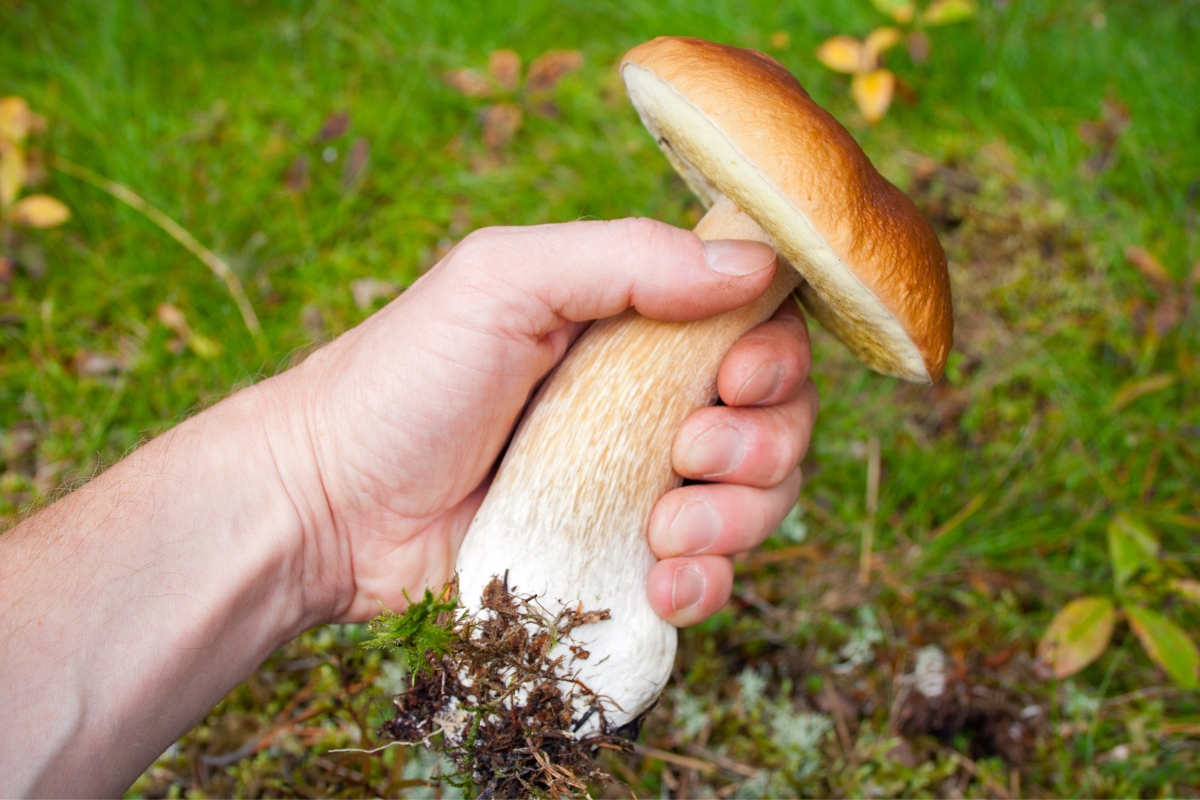
Cooking with Boletes
Transforming your harvest into a wonderful meal is half the fun of finding Boletes. They can take your favorite recipes and really kick it up a notch. They are savory, nutty, and with a rich flavor that tingles the taste buds just thinking about it. It is this superb flavor that makes them a highly cherished delicacy, and in some places often reserved for the most special of occasions.
Like previously mentioned, the culinary capacities of Boletes evolve into something entirely different once dry. The flavor becomes concentrated and the fragrant aromatics become more powerful. It transforms them into a seasoning that imbues its taste into sauces, soups, and whatever meal you wish to illuminate. This is partially thanks to degradation processes that result in more complex secondary compounds. Many people prefer dried boletes as a superior ingredient because of this.
This being said, fresh Boletes have a distinguished meaty texture and a flavor that acts with autonomy in a dish. Either way is delicious, but just be aware that they are unique ingredients! I find that the young firm buttons are worth eating fresh while the older, less prime specimens, are best suited for drying.
For preparing fresh Boletes, I suggest cutting the stems horizontally into small circles about half an inch thick. The caps can be cut from top to bottom. Many people remove the spongy pore surface from older specimens because they have a less enjoyable texture, but don’t let this go to waste! The pores are some of the most flavorful parts of the mushroom and can be dried or cooked into wonderful sauces.
Once you have them sliced, simply sautee them with a bit of garlic, salt, and pepper. Use your favorite cooking oil or butter. Gently cook until browned on both sides and incorporate them into your dish. Add these to soup, risotto, stir-fry, or simply use them as a garnish! Fresh parsley or other aromatic herbs can further compliment their flavor.
When using dried Boletes you can simply add them to moisture rich dishes while cooking. For example, tomato sauces, rice, soups, and stews. If your dish lacks moisture, you may want to rehydrate them for about 10 minutes in warm water before using it.
In Italy, King Boletes are also often thinly sliced and eaten raw. They are served with a bit of salt, pepper, and olive oil for a delicious entree. Be aware that raw mushrooms are hard to digest and have nutritional value. Also, keep in mind that while King Boletes are safe to eat raw, other species which are non-toxic when cooked may be toxic raw!

Preserving Boletes
There are several ways to preserve Boletes, each of which has its benefits.
Drying Boletes – To do this, simply slice them thinly and place them in a dry location with good ventilation or sunlight. Using a needle and thick string, you can also string them up somewhere. Alternatively, you can place them sliced into the oven at a low temperature with the oven door slightly ajar. Wait until they are cracker dry before storing them in an air-tight location. In Europe, they are often stored along with bay leaves which help prolong their shelf life and deter insects.
Freezing – You can also your boletes and then freeze them. This way they are easy to incorporate into any meal. Do not freeze raw boletes as you’ll end up with a very slimy texture that is unpleasant to eat!
Pickling – In Eastern Europe, it is not uncommon for Boletes to be pickled. Simply cut them into medium-sized pieces, par-boil them for a few minutes until cooked, then place them in a jar using your favorite pickling recipe. The texture is a bit slimy so beware if that is something you don’t like!


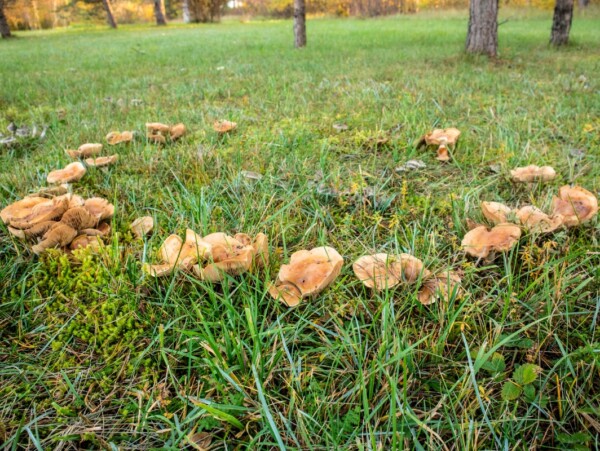
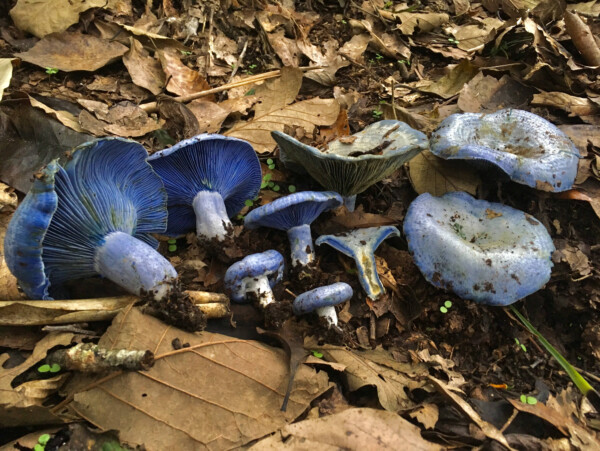
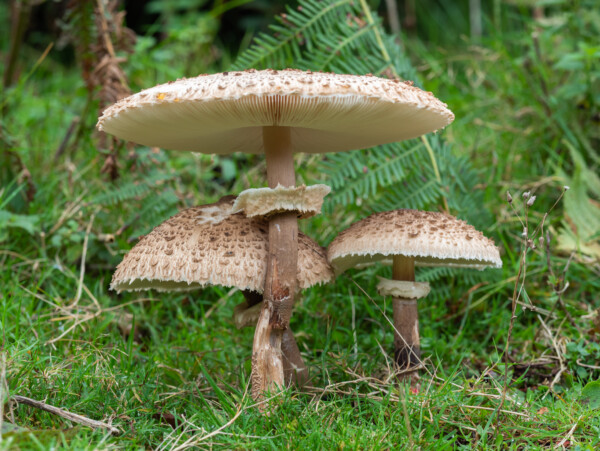










1 Comment